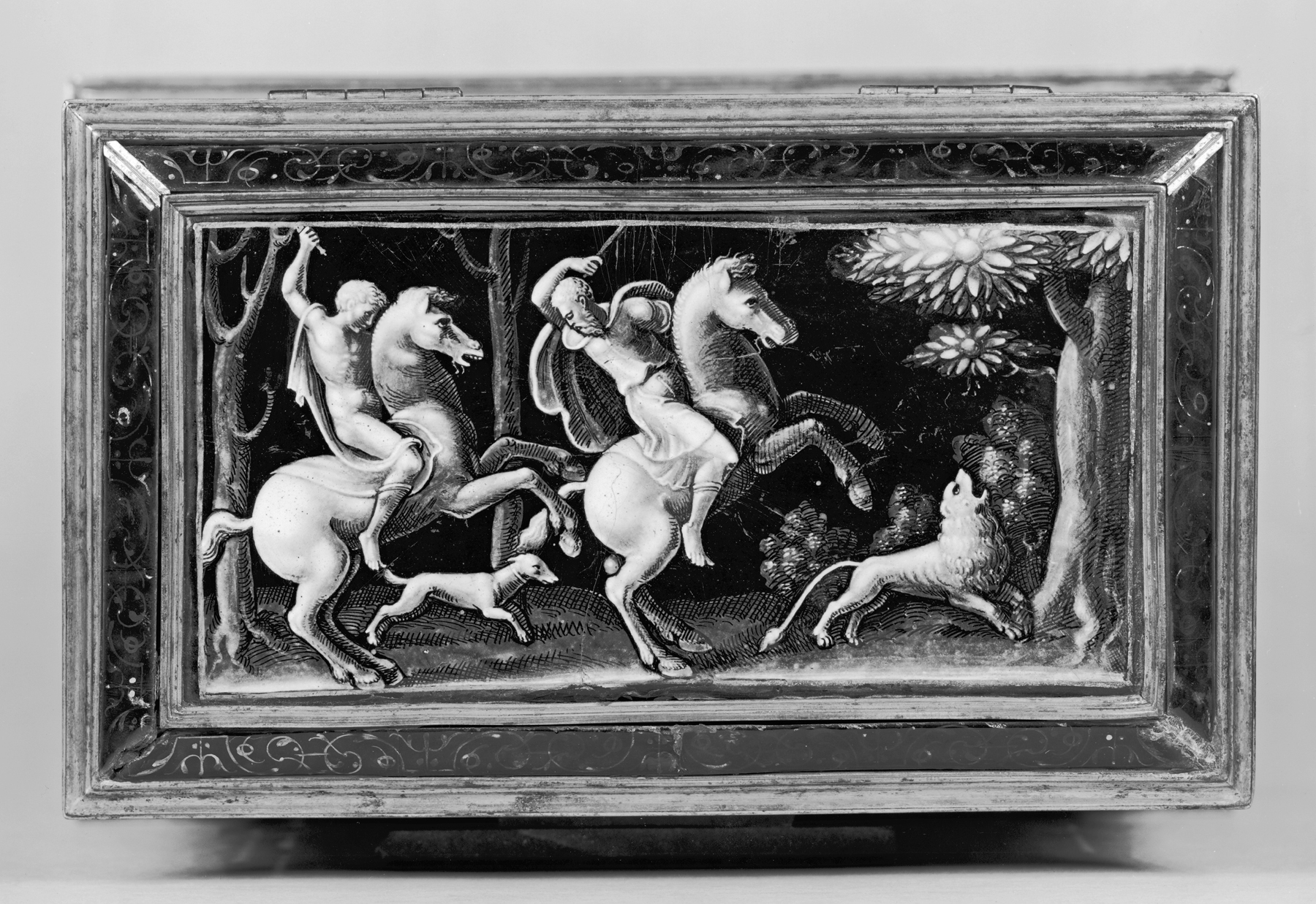Casket with Scenes of Ancient Lion Hunts
(Renaissance Europe )
Such caskets for storing personal items and treasures were often decorated with romantic scenes from ancient mythology or an imagined past. The subject of the lion hunt was found on Roman sarcophagi but made accessible for artists through Renaissance prints. Reymond must have never seen lions, which here look like pesky dogs. A mythical unicorn is featured on a side panel.
The clear, black contours reflect Reymond's reliance on prints for his designs, but the lively rendering of surfaces is his own. Another version of this casket (present location unknown) is signed and dated 1547.
Provenance
Provenance (from the French provenir, 'to come from/forth') is the chronology of the ownership, custody, or location of a historical object. Learn more about provenance at the Walters.
[possibly from the Rattier and Beurdeley Collections]; Charles Mannheim [date and mode of acquisition unknown] [catalogue by E. Molinier, p. 29, no. 180]; J. Pierpont Morgan, New York, no. 765; Arnold Seligmann, Rey and Co., New York [date and mode of acquisition unknown]; Henry Walters, Baltimore, 1919, by purchase; Walters Art Museum, 1931, by bequest.
Geographies
France, Limoges (Place of Origin)
Measurements
Overall H: 5 1/2 x W: 9 3/16 in. (14 x 23.3 cm); Top, front and back plaques H: 3 1/2 x W: 6 3/4 in. (8.9 x 17.1 cm); End plaques H: 3 1/2 x W: 3 5/16 in. (8.9 x 8.4 cm)
Credit Line
Acquired by Henry Walters, 1919
Location in Museum
Accession Number
In libraries, galleries, museums, and archives, an accession number is a unique identifier assigned to each object in the collection.
In libraries, galleries, museums, and archives, an accession number is a unique identifier assigned to each object in the collection.
44.135


